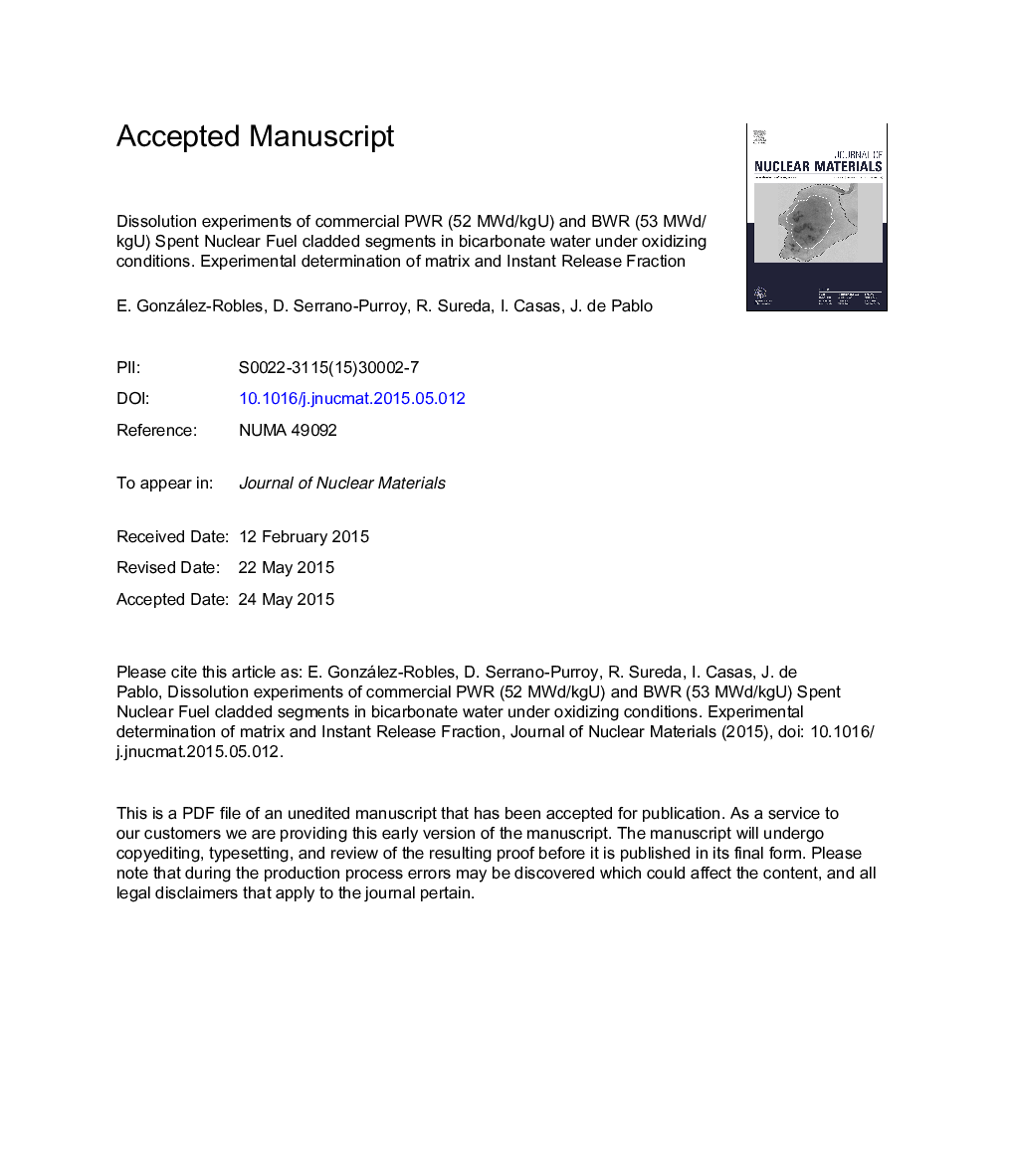| Article ID | Journal | Published Year | Pages | File Type |
|---|---|---|---|---|
| 7965126 | Journal of Nuclear Materials | 2015 | 36 Pages |
Abstract
One sample of each SNF, consisting of fuel and cladding, has been leached in bicarbonate water during one year under oxidizing conditions at room temperature (25 ± 5)°C. The behaviour of the concentration measured in solution can be divided in two according to the release rate. All radionuclides presented an initial release rate that after some days levels down to a slower second one, which remains constant until the end of the experiment. Cumulative fraction of inventory in aqueous phase (FIAPc) values has been calculated. Results show faster release in the case of the PWR SNF. In both cases Np, Pu, Am, Cm, Y, Tc, La and Nd dissolve congruently with U, while dissolution of Zr, Ru and Rh is slower. Rb, Sr, Cs and Mo, dissolve faster than U. The IRF of Cs at 10 and 200 days has been calculated, being (3.10 ± 0.62) and (3.66 ± 0.73) for PWR fuel, and (0.35 ± 0.07) and (0.51 ± 0.10) for BWR fuel.
Keywords
Related Topics
Physical Sciences and Engineering
Energy
Nuclear Energy and Engineering
Authors
E. González-Robles, D. Serrano-Purroy, R. Sureda, I. Casas, J. de Pablo,
